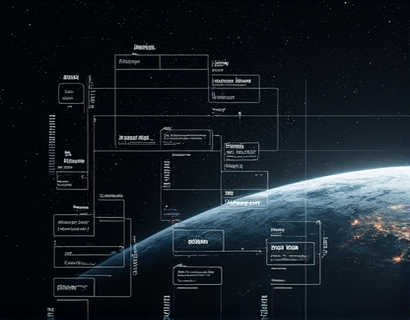Maximize Leadership Efficiency: A Comprehensive Dashboard for Streamlined Team Management and Enhanced Productivity Across Diverse Industries
In today's fast-paced business environment, effective leadership is crucial for driving success and maintaining a competitive edge. Leaders are often tasked with managing large, diverse teams spread across various departments and locations. The complexity of such tasks can lead to communication breakdowns, inefficiencies, and suboptimal decision-making. To address these challenges, a comprehensive dashboard designed to streamline team management and enhance productivity is essential. This article explores how an advanced dashboard can transform leadership efficiency, focusing on streamlined operations, improved communication, and empowered decision-making across different industries.
Understanding the Need for a Comprehensive Dashboard
The traditional methods of team management, such as spreadsheets, emails, and manual reports, are no longer sufficient for modern organizations. These methods are time-consuming, prone to errors, and often fail to provide real-time insights. A comprehensive dashboard offers a centralized platform where leaders can monitor team performance, track projects, and facilitate communication seamlessly. Such a tool is particularly valuable for leaders managing remote teams or those operating in industries with high regulatory compliance, where accuracy and transparency are paramount.
Key Features of an Advanced Dashboard
An effective dashboard should encompass a range of features tailored to meet the diverse needs of leaders across various sectors. Some of the key features include:
- Real-time data visualization: Dashboards should provide instant access to key performance indicators (KPIs) and metrics, allowing leaders to make informed decisions quickly.
- Customizable dashboards: Leaders can tailor the dashboard to focus on the most relevant metrics and data for their specific team and industry.
- Integrated communication tools: Built-in messaging, video conferencing, and file-sharing capabilities ensure smooth collaboration and reduce the need for external tools.
- Project management integration: Seamless integration with popular project management software enables leaders to track progress, assign tasks, and manage deadlines efficiently.
- Compliance and reporting: For industries with strict regulatory requirements, the dashboard should generate compliance reports and ensure data security and privacy.
These features collectively enhance the leader's ability to oversee operations, foster team collaboration, and drive productivity.
Streamlining Operations with a Comprehensive Dashboard
One of the primary benefits of a comprehensive dashboard is its ability to streamline operations. By centralizing data and processes, leaders can reduce the administrative burden and focus on strategic initiatives. For instance, in the manufacturing sector, a dashboard can monitor production lines in real-time, alerting leaders to any bottlenecks or equipment issues. This proactive approach minimizes downtime and optimizes resource allocation.
In the healthcare industry, a dashboard can track patient flow, monitor staff schedules, and manage inventory levels of medical supplies. This holistic view enables hospital administrators to make data-driven decisions that improve patient care and operational efficiency. Similarly, in the retail sector, a dashboard can provide insights into sales trends, customer behavior, and inventory levels, helping managers to optimize stock and enhance customer experiences.
Enhancing Communication and Collaboration
Effective communication is the backbone of any successful team. A comprehensive dashboard facilitates better communication by providing a unified platform for team members to interact, share information, and collaborate on projects. Integrated communication tools such as chat, video calls, and document sharing eliminate the need for fragmented communication channels and reduce the risk of miscommunication.
For remote teams, this is particularly beneficial as it fosters a sense of unity and ensures everyone is on the same page. Leaders can easily monitor team interactions, provide feedback, and address issues promptly. This level of transparency and accessibility not only boosts morale but also enhances overall team performance.
Empowering Decision-Making
Data-driven decision-making is crucial for leaders aiming to maximize efficiency and productivity. A comprehensive dashboard provides real-time data and analytics, enabling leaders to make informed decisions quickly. For example, in the finance industry, a dashboard can offer real-time insights into financial performance, market trends, and risk factors. This immediate access to critical information allows financial leaders to adjust strategies and mitigate risks effectively.
In the technology sector, a dashboard can track project milestones, resource utilization, and customer feedback, helping IT managers to prioritize tasks and allocate resources optimally. This data-driven approach ensures that decisions are based on accurate and up-to-date information, reducing the likelihood of errors and improving outcomes.
Adaptability Across Industries
The versatility of a comprehensive dashboard makes it applicable across a wide range of industries. Each sector has unique challenges and requirements, but the core functionalities of the dashboard can be adapted to meet these needs. For instance, in the education sector, a dashboard can monitor student progress, track course enrollment, and manage faculty schedules. This centralized view helps administrators to identify areas for improvement and allocate resources more effectively.
In the non-profit sector, a dashboard can track fundraising progress, volunteer engagement, and program outcomes. This transparency is essential for maintaining donor trust and ensuring the effective use of resources. The dashboard's adaptability ensures that leaders in any industry can leverage its features to enhance their management practices and drive success.
Implementing a Comprehensive Dashboard
Implementing a comprehensive dashboard requires a strategic approach to ensure maximum benefits. Here are some steps organizations can follow:
- Assess needs: Conduct a thorough analysis of the current management processes and identify areas where a dashboard can add value.
- Choose the right tool: Evaluate different dashboard solutions based on features, scalability, and integration capabilities. Select a tool that aligns with the organization's specific requirements.
- Customize the dashboard: Tailor the dashboard to reflect the unique metrics and KPIs relevant to the organization and its teams.
- Train staff: Provide comprehensive training to ensure that team members are comfortable using the dashboard and understand its benefits.
- Monitor and adjust: Continuously monitor the dashboard's performance and make adjustments as needed to optimize its effectiveness.
By following these steps, organizations can successfully integrate a comprehensive dashboard into their management framework, leading to improved efficiency and productivity.
Conclusion
In conclusion, a comprehensive dashboard is an invaluable tool for leaders aiming to maximize their effectiveness in managing large, diverse teams. By streamlining operations, enhancing communication, and empowering data-driven decision-making, such a dashboard can significantly boost productivity and efficiency across various industries. As businesses continue to evolve and face new challenges, the importance of advanced management tools cannot be overstated. Embracing a comprehensive dashboard is a strategic move that can set organizations apart in today's competitive landscape.










































